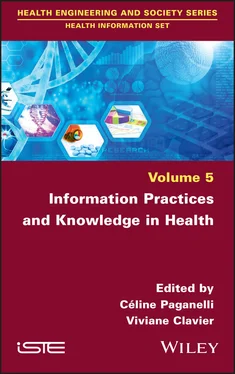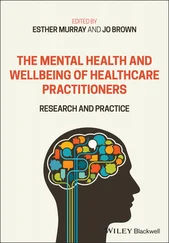1 v
2 iii
3 iv
4 xi
5 xii
6 xiii
7 xiv
8 xv
9 xvi
10 xvii
11 xviii
12 xix
13 xx
14 xxi
15 xxii
16 1
17 2
18 3
19 4
20 5
21 6
22 7
23 8
24 9
25 10
26 11
27 12
28 13
29 14
30 15
31 16
32 17
33 18
34 19
35 20
36 21
37 22
38 23
39 24
40 25
41 26
42 27
43 28
44 29
45 30
46 31
47 32
48 33
49 34
50 35
51 36
52 37
53 38
54 39
55 40
56 41
57 42
58 43
59 44
60 45
61 46
62 47
63 48
64 49
65 50
66 51
67 52
68 53
69 54
70 55
71 56
72 57
73 58
74 59
75 60
76 61
77 62
78 63
79 64
80 65
81 66
82 67
83 68
84 69
85 71
86 72
87 73
88 74
89 75
90 76
91 77
92 78
93 79
94 80
95 81
96 82
97 83
98 84
99 85
100 86
101 87
102 88
103 89
104 90
105 91
106 92
107 93
108 94
109 95
110 97
111 98
112 99
113 100
114 101
115 102
116 103
117 104
118 105
119 106
120 107
121 108
122 109
123 110
124 111
125 112
126 113
127 114
128 115
129 117
130 118
131 119
132 120
133 121
134 122
135 123
136 124
137 125
138 126
139 127
140 128
141 129
142 130
143 131
144 132
145 133
146 134
147 135
148 136
149 137
150 138
151 139
152 140
153 141
154 142
155 143
156 144
157 145
158 146
159 147
160 148
161 149
162 150
163 151
164 152
165 153
166 154
167 155
168 156
169 157
170 158
171 159
172 160
173 161
174 162
175 163
176 164
177 165
178 167
179 168
180 169
181 170
182 171
183 172
184 173
185 174
186 175
187 176
188 177
189 178
190 179
191 180
192 181
193 182
194 183
195 184
196 185
197 186
198 187
199 188
200 189
201 190
202 191
203 192
204 193
205 194
206 195
207 196
208 197
209 198
210 199
211 200
212 201
213 202
214 203
215 204
216 205
217 206
218 207
219 208
220 209
221 210
222 211
223 212
224 213
Health Information Set
coordinated by
Céline Paganelli and Viviane Clavier
Volume 5
Information Practices and Knowledge in Health
Edited by
Céline Paganelli
Viviane Clavier

First published 2022 in Great Britain and the United States by ISTE Ltd and John Wiley & Sons, Inc.
Apart from any fair dealing for the purposes of research or private study, or criticism or review, as permitted under the Copyright, Designs and Patents Act 1988, this publication may only be reproduced, stored or transmitted, in any form or by any means, with the prior permission in writing of the publishers, or in the case of reprographic reproduction in accordance with the terms and licenses issued by the CLA. Enquiries concerning reproduction outside these terms should be sent to the publishers at the undermentioned address:
ISTE Ltd
27-37 St George’s Road
London SW19 4EU
UK
www.iste.co.uk
John Wiley & Sons, Inc.
111 River Street
Hoboken, NJ 07030
USA
www.wiley.com
© ISTE Ltd 2022
The rights of Céline Paganelli and Viviane Clavier to be identified as the authors of this work have been asserted by them in accordance with the Copyright, Designs and Patents Act 1988.
Any opinions, findings, and conclusions or recommendations expressed in this material are those of the author(s), contributor(s) or editor(s) and do not necessarily reflect the views of ISTE Group.
Library of Congress Control Number: 2021949036
British Library Cataloguing-in-Publication Data
A CIP record for this book is available from the British Library
ISBN 978-1-78630-611-1
This collective work, the fifth in the series Health Information , brings together eight contributions. It deals with health information and communication and highlights strong trends or “movements” in the field of health, which consist of many dimensions to be articulated in order to approach knowledge and information practices.
A first movement involves the growing visibility of health issues in the public space, an observation that dates back more than 20 years, as shown by issue 95 of the French journal Réseaux published in 1999 on “Science, the sick and the public space”. This issue focused on patients and patient organizations that had acquired legitimacy in the public arena, thus contributing “to a new way of thinking about the relationship between science and the general public”. This relationship, according to the authors [CAR 99, p. 10] “[was] less of an asymmetrical relationship of expertise and pedagogy, but rather [allowed for] the expression of scientific uncertainties, the sensitive involvement of caregivers or the claims of patients” [ ibid .]. The media appear to be the key players in this publicizing of health issues. As early as the 1980s, television relayed appeals for donations or compassion for the Telethon [WAL 98]; the “media coverage” of AIDS or the story of contaminated blood provided the opportunity for “tests of strength” between the political, medical and judicial arenas, as well as for the internal tests of strength in the journalistic field on the “legitimate definition of information” [CHA 94]. Beyond the media space, society as a whole is, according to the health sociologist Pierre Aïach [AÏA 98] and the anthropologist, sociologist and doctor Didier Fassin [FAS 98], going through a process of medicalization that they consider to be a cultural transformation. Protecting ourselves and fighting against illness, detecting and preventing risks, staying healthy, etc. have become a constant preoccupation, elevated to the rank of a movement: healthism [CRA 82]. This “concept”, which emerged during the 1970s and 1980s, refers in particular to the Foucauldian thesis according to which individuals come to adhere to social norms of their own free will, even though they are not forced to do so. According to Hélène Pouliquin, healthism is recognized as “an elevation of health to the rank of virtues and morality, accompanied by an individual duty to maintain health by making individuals responsible, even if at the same time the state disengages from acting on the social, political and economic determinants of health” [POU 15, p. 26]. Promotional discourse and consumer practices are part of this trend, as Benoit Lafon shows with another neologism he calls “sanitarization” to indicate, once again, a double movement perceptible in the “consumer press” [LAF 20]: on the one hand, the consideration of public health issues in entire sectors of the economy, which, beyond agriculture, concern various industrial activities such as agri-food, chemistry or electronics. On the other hand, the increasing consumerization of healthcare is manifested in the growth of medical devices, “reimbursed” by complementary health insurance organizations in competition with each other (glasses, hearing aids, etc.), or by the ever-expanding dynamics of the drug industry towards other areas to be medicalized (well-being, smoking, etc.). This same tendency can be found in food, as attested by a third neologism coined in 2009 by the food sociologist Jean-Pierre Poulain [POU 09]. Thus, the “nutritionalization” of food refers to the management of food in the context of a specific pathology by a health professional specialized in nutrition. It also refers to the massive diffusion of nutritional knowledge in health education, prevention campaigns and the media.
Читать дальше













